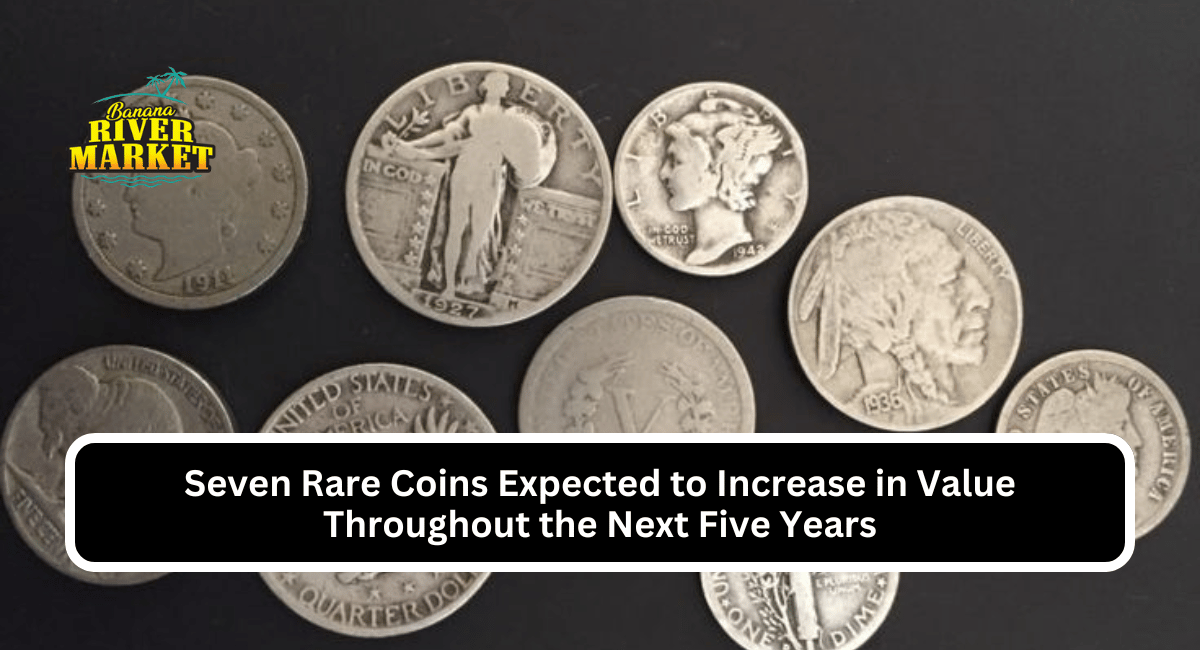Coin collecting is a gratifying hobby that combines history, art, and financial possibilities. The rare coin market offers exciting prospects for those wishing to start this pastime with an eye toward future earnings.
Some coins have appreciated notably throughout the years and are expected to keep increasing in value depending on their rarity, historical worth, or unique qualities.
1. Lincoln Penny of 1909-S VDB
In the field of numismatics, this well-known Lincoln cent is especially dear. The “S” denotes it was produced in San Francisco, while “VDB” stands for Victor David Brenner’s initials, the designer. Having just 484,000 ever struck, this penny has become a sought-after collectible.
It is pretty valuable because of its rarity and the fact that it was the first Lincoln cent to have Brenner’s initials. With hopes for future value, a well-preserved 1909-S VDB cent today can bring between $1,500 and $2,000.
2. Mercury Dime 1916-D
Because of its restricted manufacturing, the Denver-made 1916-D Mercury Dime is among the most sought-after dimes for collectors. Its antiquity and scarcity particularly in higher grades as well as its premium advantage in the market, reflect this.
One of these coins is a great contender for a lucrative collection, as collectors may anticipate paying anywhere from $15,000 to $25,000 for one of them.
3. Three-Legged Buffalo Nickel: 1937-D
There is an exciting background behind this unique coin. Designed in Denver, it was unintentionally created with just three visible legs on the buffalo from an over-polished die. Often referred to as an “error coin,” this unique quality has made it popular among collectors.
A three-legged Buffalo Nickel is worth between $1,200 and $2,500 right now, and its distinctiveness will probably help to increase its value with time.
4. Saint-Gaudens Double Eagle 1921
Renowned for its excellent craftsmanship and rarity, the 1921 Saint-Gaudens Double Eagle is a gold coin. Designed by Augustus Saint-Gaudens, this 24-karat gold sculpture is a rare collectible and a masterwork.
Only a limited amount was created, and this coin has a market worth between $150,000 and $250,000. It is considered a valuable work in U.S. numismatic history, but its worth should only increase gradually.
5. The 1955 Doubled Die Lincoln Cent
Famous for its “doubled die” mistake which resulted in duplication on the date and lettering the 1955 Lincoln Cent is aesthetically arresting and eagerly sought after. Because of its rarity and great demand among collectors and investors, this coin’s value ranges from $1,500 to $5,000 and is likely to climb.
Quick Comparison of Rare Coins Expected to Rise in Value
| Coin Name | Year | Mint Location | Notable Feature | Estimated Value |
|---|---|---|---|---|
| 1909-S VDB Lincoln Penny | 1909 | San Francisco | First Lincoln penny with VDB | $1,500 – $2,000 |
| 1916-D Mercury Dime | 1916 | Denver | Limited mintage | $15,000 – $25,000 |
| 1937-D Three-Legged Buffalo Nickel | 1937 | Denver | Mint error | $1,200 – $2,500 |
| 1921 Saint-Gaudens Double Eagle | 1921 | Philadelphia | High gold content | $150,000 – $250,000 |
| 1955 Doubled Die Lincoln Cent | 1955 | Philadelphia | Doubled die error | $1,500 – $5,000 |
As the popularity of coin collecting continues to grow, these rare coins are poised for future appreciation. Investors looking to diversify into tangible assets may find coins like these an attractive addition to their portfolio.
FAQs
1. Why are certain coins more valuable than others?
The value of a coin frequently comes from its rarity, historical importance, condition, and special qualities, such as minting mistakes. Coins with restricted mintage or distinctive characteristics usually increase in value more quickly.
2. Should one pursue incorrect coins?
True. Error coins such as the 1937-D Three-Legged Buffalo Nickel and the 1955 Doubled Die Lincoln Cent are widely sought for their rarity and unusual appearance, often fetching premium prices.
3. How may I begin a worthwhile coin collection?
First, concentrate on coins with limited mintage or historical relevance. Building an honest and worthwhile collection will require visiting coin exhibitions, joining collecting clubs, and purchasing from reliable vendors.
4. Why would one consider a coin a wise investment?
Strong historical origins, restricted supply, and high-demand coins usually perform well as investments. Examining current pricing patterns and contacting professionals will help you select worthwhile items.
5. Can I ascertain its value by depending on the coin condition?
Indeed, a lot of the determinant of value is coin quality. Higher-quality coins usually fetch more excellent rates. The Sheldon Scale and other instruments will enable you to assess and grasp the quality of a coin.
READ MORE: Four Groundbreaking Methods for Finding Undervalued Coins at Auction

